Photinia Red Robin, a versatile and visually striking shrub, has gained immense popularity among gardening enthusiasts and landscape designers for its bright red young leaves that mature into a deep, glossy green. Its tiny white flowers that bloom in the spring season further add to the charm of this evergreen shrub, making it an ideal choice for hedging, privacy screening, or simply adding a pop of colour to the garden. However, like any other plant species, Photinia Red Robin is not without its share of challenges problems.
In this hedging guide, we will explore common photinia red robin problems faced by gardeners in the UK while growing this plant, and discuss the identification and treatment of diseases and pests that can afflict this beautiful plant. Moreover, we will also delve into alternative hedging and screening plants, offering options that are disease-resistant, cold-hardy, and low-maintenance, ensuring you have a variety of choices for your garden.
Despite its widespread use and availability in the UK, Photinia Red Robin is often underappreciated due to misconceptions about its susceptibility to diseases and issues related to its care. While it is true that this plant can encounter certain problems, understanding these challenges and addressing them in a timely manner can help maintain healthy plants that will thrive in your garden.
Some of the most common issues faced by gardeners while growing Photinia Red Robin in the UK include leaf spot, fireblight, powdery mildew, frost damage, and root rot. In the following sections, we will explore these problems in detail, providing valuable insights on identifying symptoms and offering effective solutions to ensure the well-being of your Photinia Red Robin plants.
Early identification and treatment of diseases and pests are crucial in preventing further damage to your Photinia Red Robin plants, as well as safeguarding the overall health of your garden. By being vigilant and proactive, you can tackle these issues head-on and ensure that your plants remain vibrant and robust.
In the following subsections, we will delve deeper into specific diseases and pests that can affect Photinia Red Robin, examining their symptoms, causes, and offering effective treatment options. Armed with this knowledge, you can protect your beautiful plants from these unwelcome intruders and enjoy the stunning visual appeal they bring to your garden.
Leaf spot disease, caused by the fungus Entomosporium maculatum, is a common issue faced by Photinia Red Robin growers, particularly in moist climates. This fungal disease presents itself as small, circular, red spots on both the upper and lower surfaces of new leaves, which can eventually merge to form larger, maroon blotches on heavily diseased leaves. Mature leaves usually develop spots. These spots are dark brown or gray in color. They are surrounded by reddish-purple rings.
To treat leaf spot disease in Photinia Red Robin, it is crucial to act promptly. If the plant is only partially affected, remove the damaged leaves and burn them to prevent the spread of fungal spores. Additionally, prune back hard in mid-May, which provides the plant with sufficient time to recover with the onset of summer.
It is also advisable to plant healthy plants in an isolated location, away from other plants with red tips, to prevent the spread of the disease.
Rust and leaf spot are two fungal diseases that affect privets. Both cause spots or discolouration on the leaves of the plants, but can be distinguished by their colour — rust is reddish-orange in appearance, while leaf spots are usually yellow or brown.
If caught early, these problems can often be resolved with fungicides. However, it is important to thoroughly cover all affected areas in order to prevent further infections.
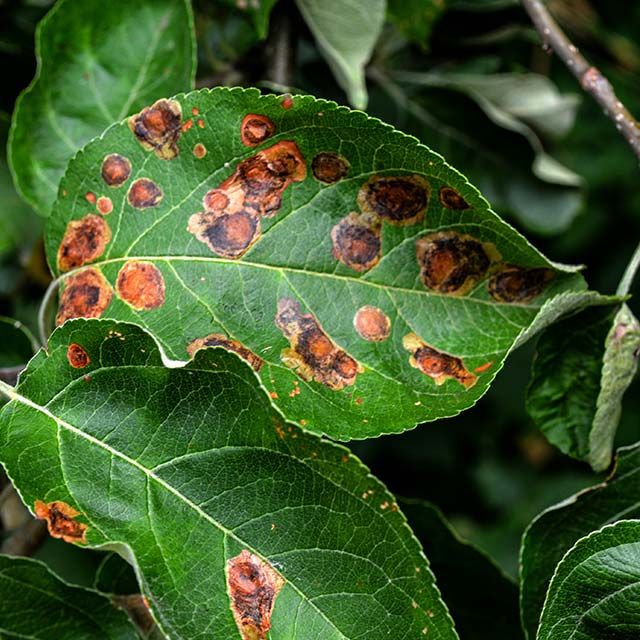
Fireblight is a bacterial disease that affects the leaves, stems, and fruit of Photinia Red Robin, causing the leaves to turn brown or black and new shoots to appear scorched. The initial indication of fire blight is a light tan to reddish, watery ooze coming from the affected leaf node branch, twig, or trunk.
The most effective way to treat fireblight on Photinia Red Robin is to prune away affected leaves and stems, ensuring that you cut back to healthy wood to prevent the spread of the infection.
Once you have removed the infected parts, apply a copper fungicide to protect the remaining healthy tissue and prevent the reoccurrence of the disease.
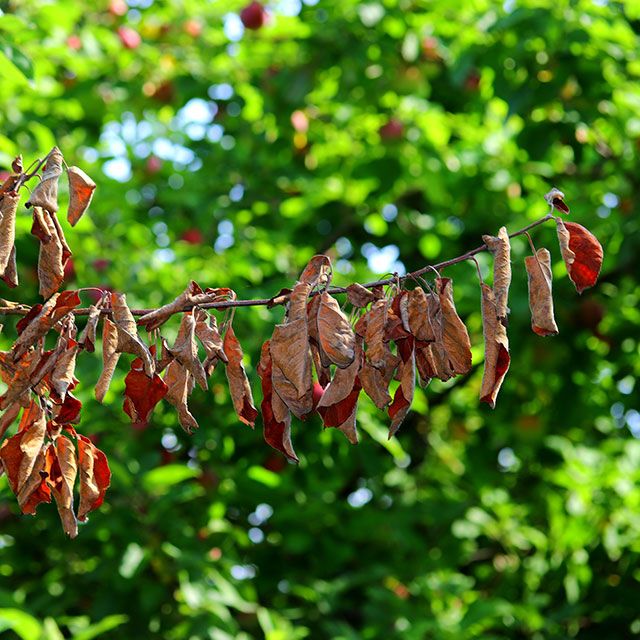
Powdery mildew is a fungal disease that manifests as white, powdery patches on the leaves and stems of Photinia Red Robin. If left untreated, the infection can spread to more leaves, fruit, and even small twiggy growth, causing significant damage to the plant.
To address powdery mildew, apply fungicides such as sulfur, neem oil, or potassium bicarbonate to the affected areas. Additionally, remove infected parts of the plant to prevent the spread of the disease.
To avoid powdery mildew in the future, maintain the foliage dry, ensure sufficient air circulation space plants, and prevent overcrowding of plants.
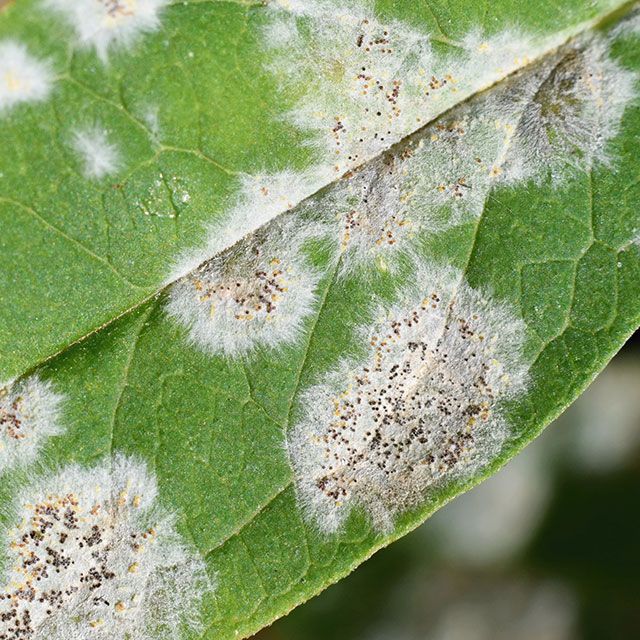
Frost can cause significant damage to Photinia Red Robin plants, leading to the discoloration and wilting of leaves. Frost damage is particularly harmful to young shoots and plants that are not yet well established.
To prevent frost damage, it is advisable to position the plant in sheltered areas, shielded from cold winds. Providing adequate protection to specimen plant from frost will ensure that your Photinia Red Robin plants can continue to thrive and maintain their vibrant appearance throughout the year.
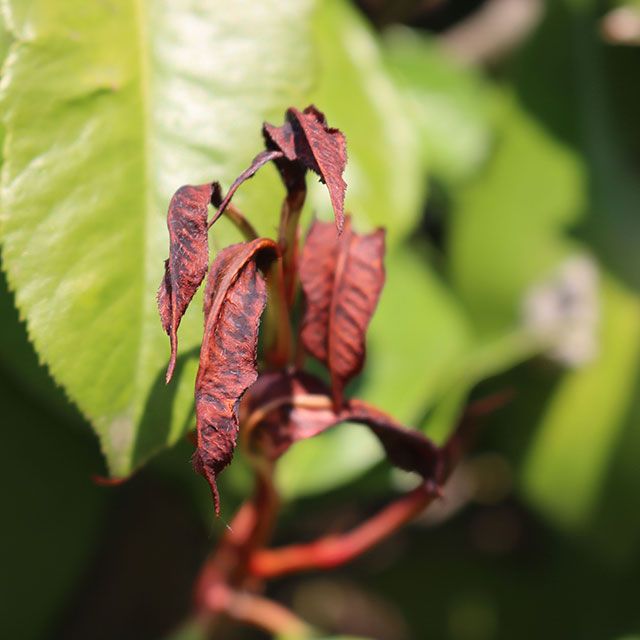
Root rot, a fungal disease caused by Phytophthora sp., affects the roots of Photinia Red Robin and is primarily caused by an accumulation of moisture in the soil or flooding. Symptoms of root rot include the yellowing of leaves and wilting of stems, indicating a weakened root system.
To treat and prevent root rot, it is essential to improve soil drainage and reduce the frequency of watering. Ensuring that your Photinia Red Robin plants have the proper soil moisture conditions and watering schedule can help to prevent this damaging disease and keep your plants healthy and strong.
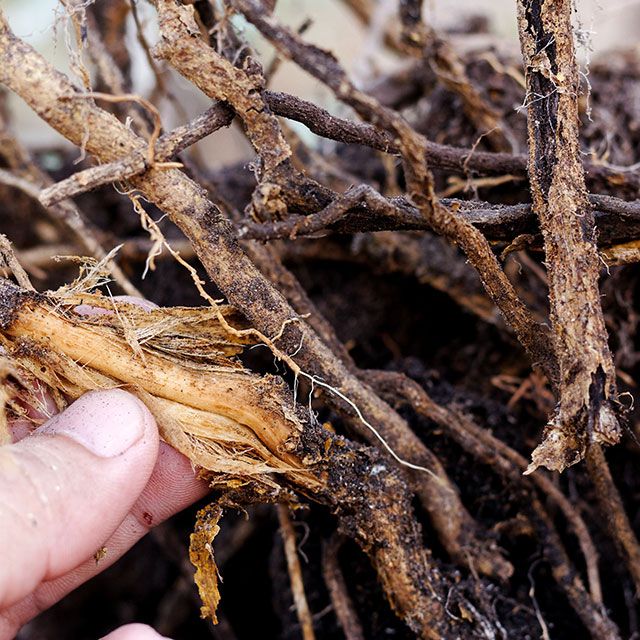
While Photinia Red Robin is a popular choice for hedging and screening, it may not always be the most suitable option for every garden. Various factors, such as susceptibility to diseases, pests, or frost, can prompt you to consider alternative plants that better suit your needs.
In the following subsections, we will explore disease-resistant, cold-hardy, and low-maintenance alternatives to Photinia Red Robin, offering a variety of choices for your garden.
If you are concerned about the potential diseases that can affect Photinia Red Robin, consider opting for disease-resistant plants such as holly hedges and laurel hedge plants.
These plants not only exhibit resistance to common diseases like leaf spot, but also offer an attractive appearance and similar functionality as Photinia Red Robin in terms of hedging and screening.
By selecting disease-resistant plants, you can enjoy the benefits of a beautiful and functional garden without the added worry of frequent disease management.
Plus, these alternatives can contribute to a diverse and visually engaging landscape, enhancing the overall appeal of your outdoor space.
Cold-hardy plant options are ideal for gardeners who experience harsh winters or live in regions with lower temperatures. Hedge plants like Box or Buxus hedges, Holly hedges, Yew hedges, Field maple hedges and Hawthorn hedges can withstand cold temperatures and continue to thrive despite challenging, wet weather or conditions.
Incorporating cold-hardy choices into your garden not only ensures that your plants remain healthy and vibrant throughout the year, but also offers a low-maintenance alternative to Photinia Red Robin.
By selecting plants that can endure the cold, you can create a stunning and resilient garden landscape that withstands the test of time.
For gardeners seeking low-maintenance alternatives to Photinia Red Robin, plants such as Common Privet, Yew Hedges and Euonymus Green Spire offer an appealing solution. These evergreen shrubs are easy to care for, can tolerate a wide range of soil types, and are resistant to many common pests and diseases.
Choosing low-maintenance alternatives not only reduces the time and effort required to maintain a thriving garden, but also allows you to focus on enjoying the beauty and tranquility of your outdoor space. By opting for easy-care plants, you can create a stunning garden landscape without the hassle of constant upkeep.
In summary, while Photinia Red Robin hedge plants are a popular and visually appealing choice for hedging and screening in the UK, it is essential to be aware of the potential problems that can arise, such as leaf spot, fireblight, powdery mildew, frost damage, and root rot. Early identification and treatment of these issues are key to maintaining healthy plants and a vibrant garden landscape.
By exploring alternative hedging and screening plants, including disease-resistant, cold-hardy, and low-maintenance options, you can create a diverse and resilient garden that suits your unique needs and preferences. Whether you choose to stick with Photinia Red Robin or explore other options, the key to a thriving garden lies in understanding the challenges and making informed decisions to ensure the well-being of your plants.